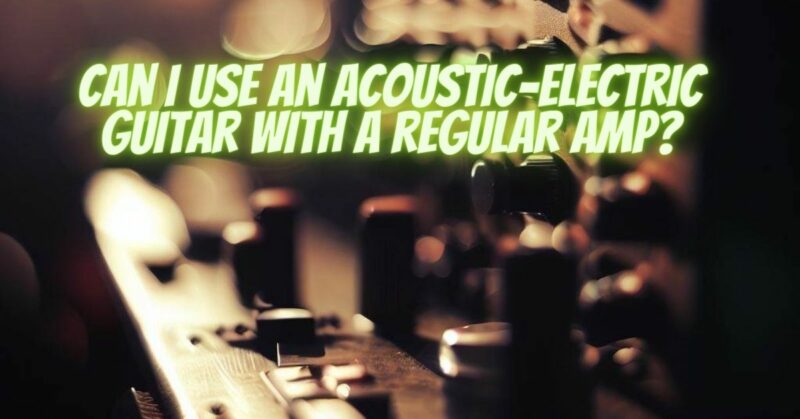Acoustic-electric guitars have gained popularity among musicians due to their versatility and ability to be amplified for live performances or recording. As an acoustic-electric guitar owner, you may wonder if it’s possible to use your instrument with a regular electric guitar amp. In this article, we will explore the compatibility of acoustic-electric guitars with regular amps and discuss important considerations when using this setup.
Understanding Acoustic-Electric Guitars:
An acoustic-electric guitar is a hybrid instrument that combines the acoustic characteristics of a traditional acoustic guitar with the capability to be amplified. These guitars feature built-in pickups or transducers that capture the vibrations of the strings and convert them into an electrical signal, allowing the sound to be amplified and processed.
Can You Use an Acoustic-Electric Guitar with a Regular Amp?
Yes, you can use an acoustic-electric guitar with a regular electric guitar amp, and it is a common practice among musicians. The amplified signal from the acoustic-electric guitar can be connected to the input of a standard electric guitar amplifier using a standard 1/4-inch instrument cable.
Important Considerations:
- Sound Quality: While it is possible to use an electric guitar amp with an acoustic-electric guitar, the sound quality may not be optimal. Regular electric guitar amps are designed to enhance and color the tone of electric guitars, which have a different tonal profile than acoustic guitars. As a result, using an electric guitar amp with an acoustic-electric guitar may lead to a sound that lacks the natural resonance and warmth of an acoustic guitar.
- Feedback: Acoustic-electric guitars are prone to feedback, especially when amplified at high volumes. Regular electric guitar amps might not have the necessary anti-feedback controls or notch filters found in dedicated acoustic amplifiers. Managing feedback can be more challenging with a regular electric guitar amp, especially in live performance situations.
- EQ Settings: Regular electric guitar amps have EQ (equalization) controls tailored for electric guitars. When using an acoustic-electric guitar with a regular amp, you may need to adjust the EQ settings to achieve a more balanced and natural acoustic sound.
- Use of Effects: Acoustic-electric guitars can benefit from effects such as reverb, delay, and chorus. While some electric guitar amps have built-in effects, they might not be optimized for acoustic sounds. Consider using external effects pedals designed for acoustic instruments to shape your sound more effectively.
- Dedicated Acoustic Amps: For the best sound quality and performance, consider investing in a dedicated acoustic guitar amplifier. Acoustic amps are specifically designed to reproduce the natural tone of acoustic-electric guitars and offer anti-feedback controls, notch filters, and EQ settings tailored to acoustic instruments.
While it is possible to use an acoustic-electric guitar with a regular electric guitar amp, it may not provide the best results in terms of sound quality and feedback control. If you primarily play your acoustic-electric guitar in amplified settings, investing in a dedicated acoustic guitar amplifier will offer superior sound quality and features tailored to acoustic instruments. However, using a regular electric guitar amp can be a practical solution for practicing or small performances when a dedicated acoustic amp is not available. In such cases, be mindful of the amp’s EQ settings and use external effects pedals to shape your acoustic-electric guitar’s sound to your liking.

